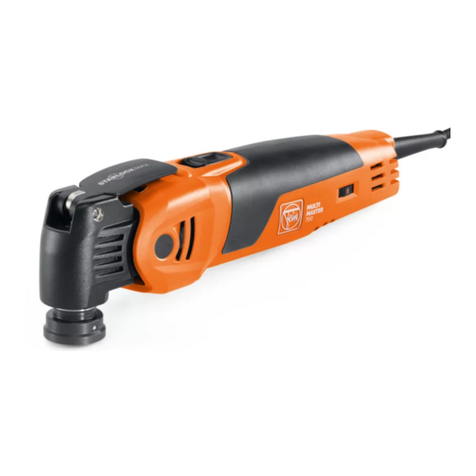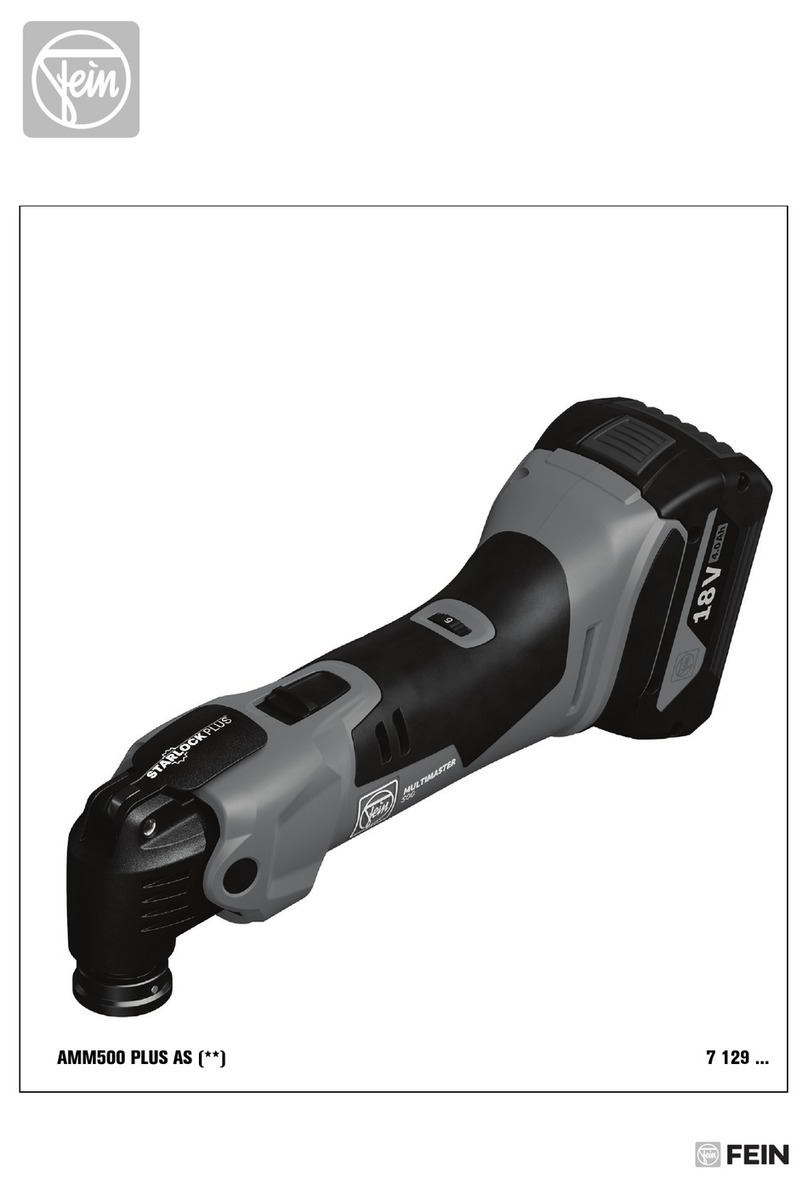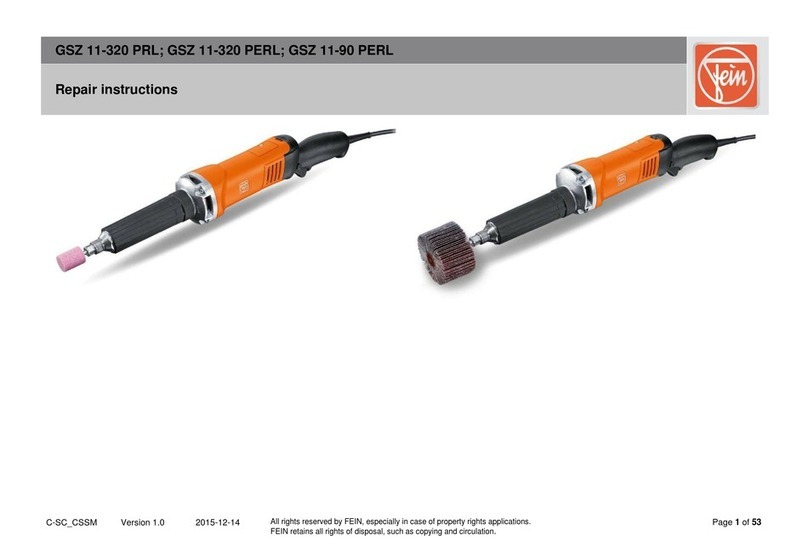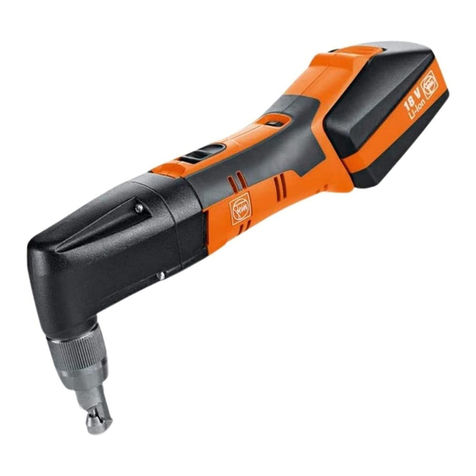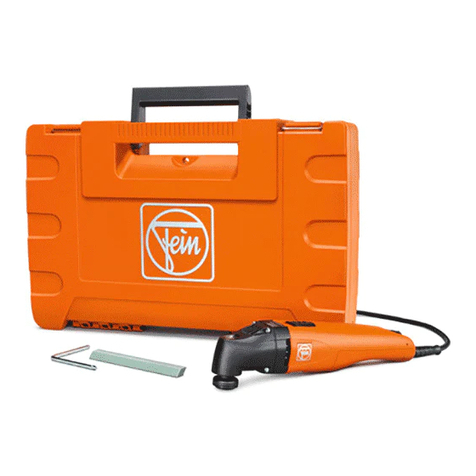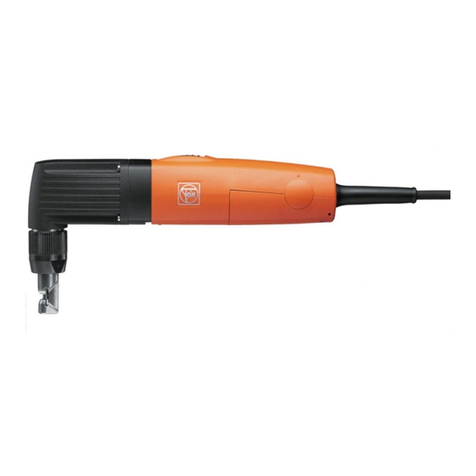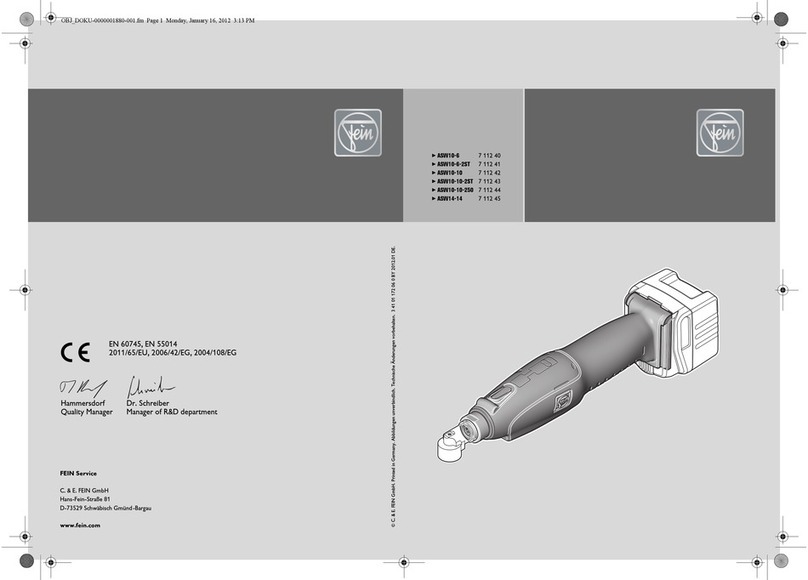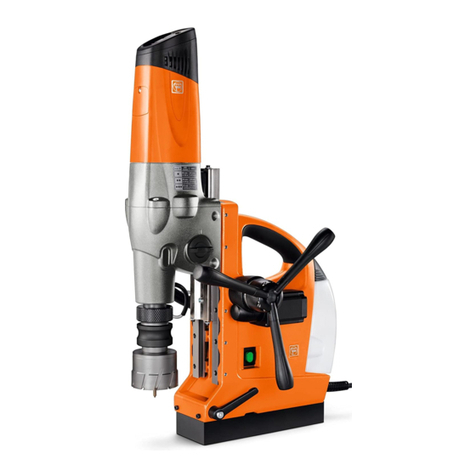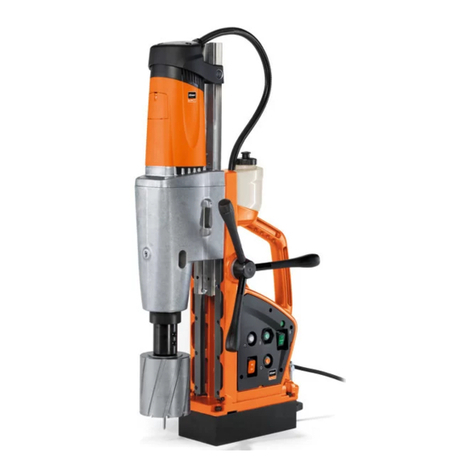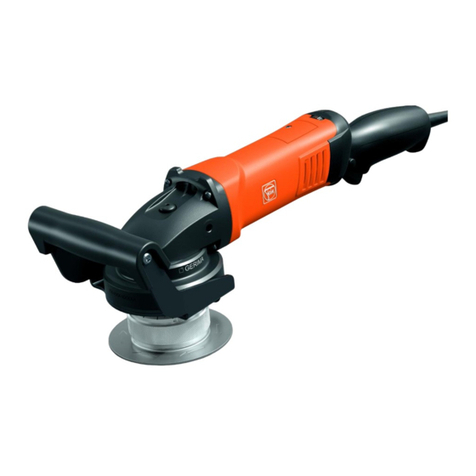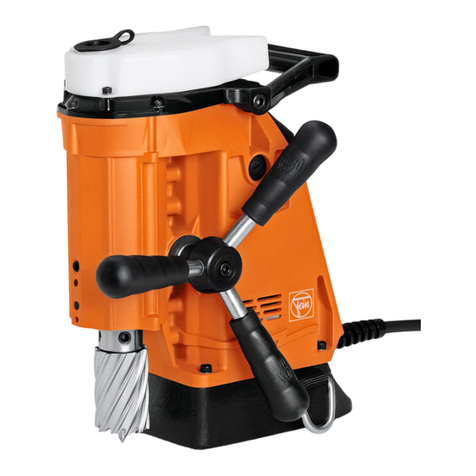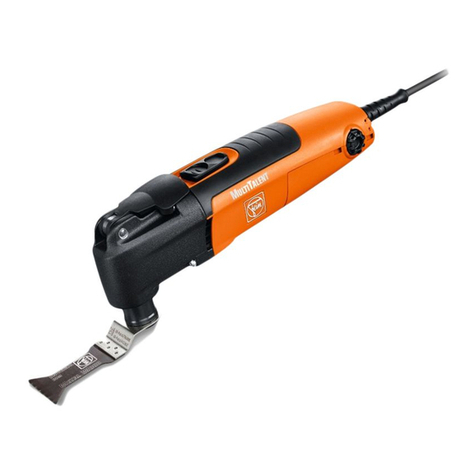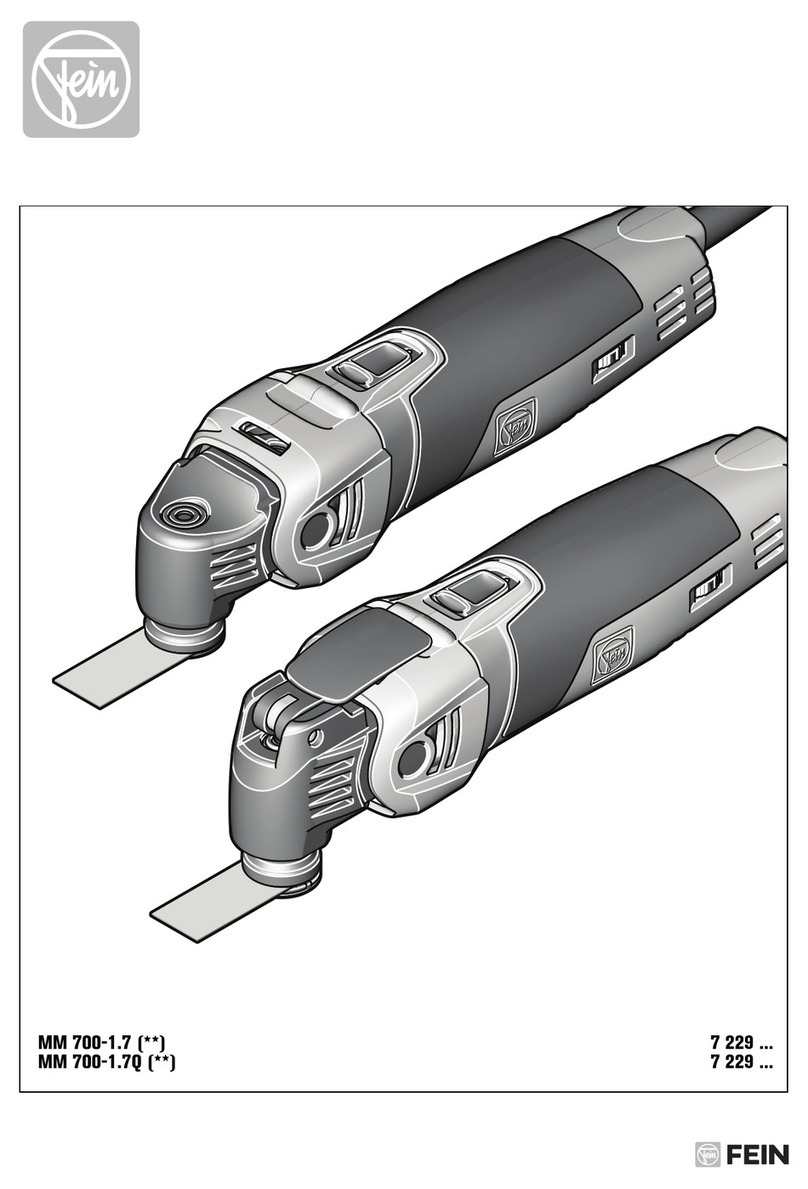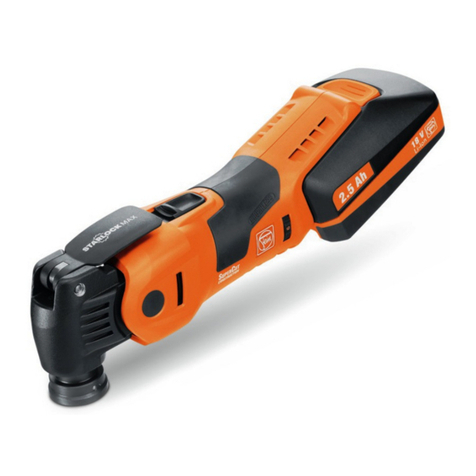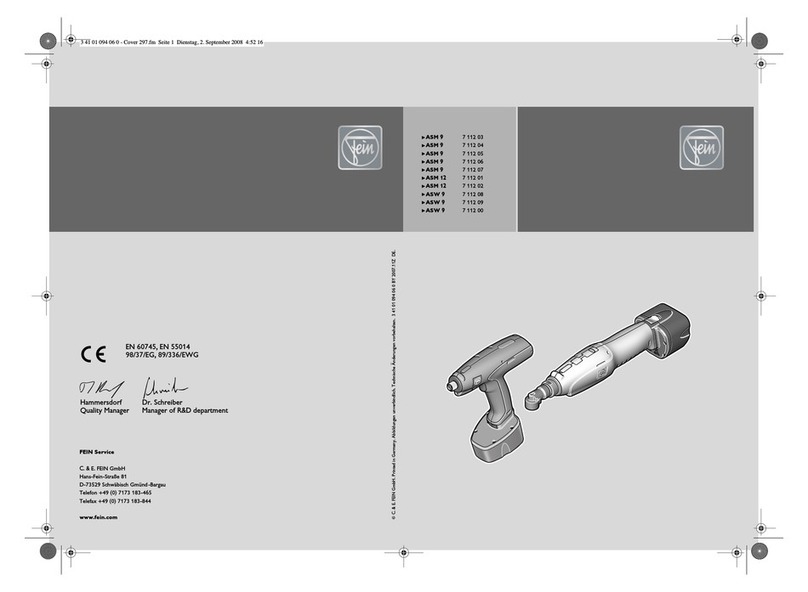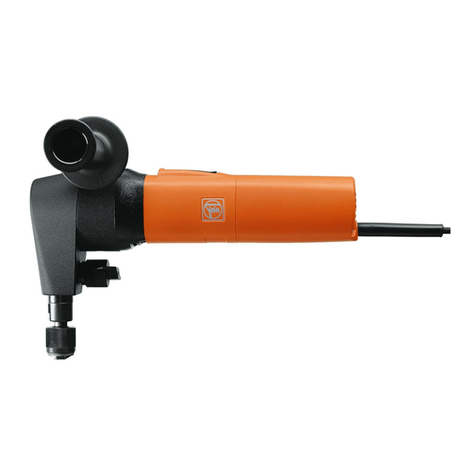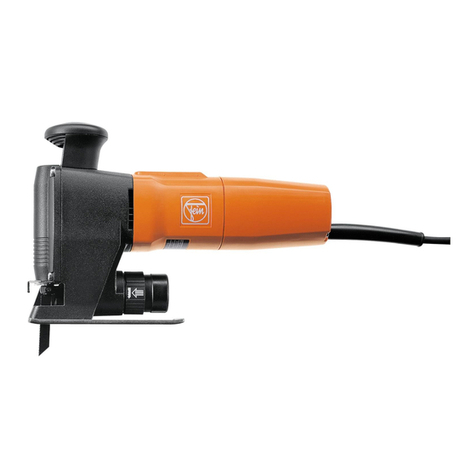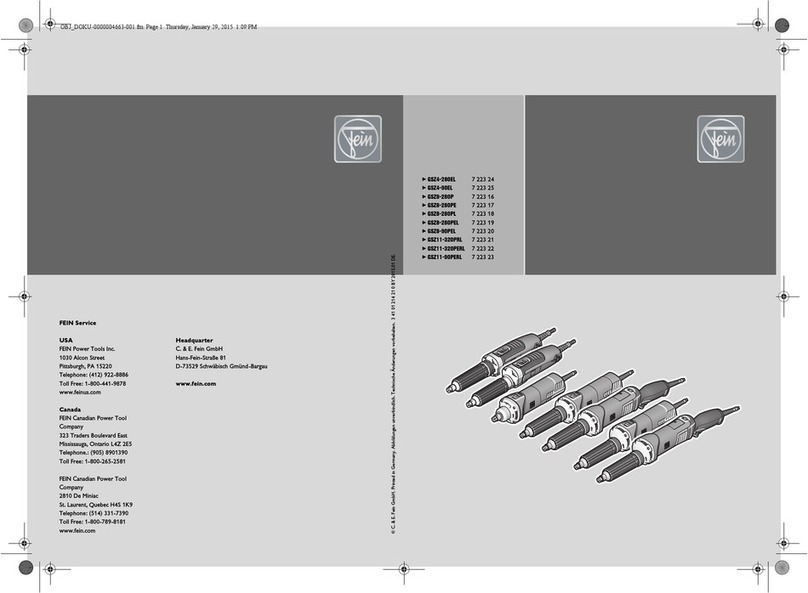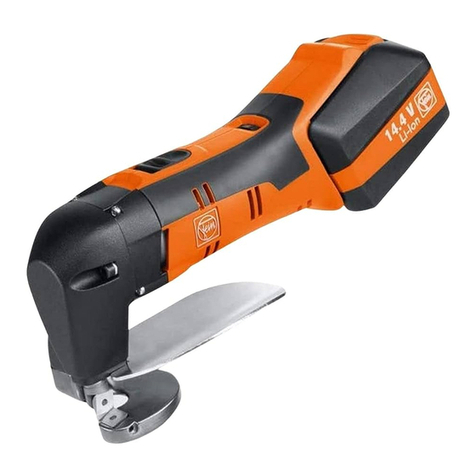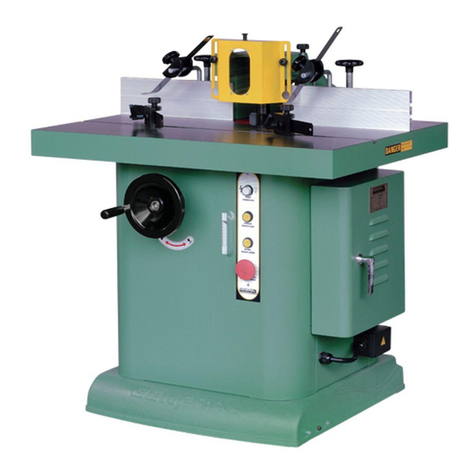
5
en
d)Under abusive conditions, liquid may be
ejected from the battery; avoid contact.
If contact accidentally occurs, flush
with water. If liquid contacts eyes, addi-
tionally seek medical help. Liquid
ejected from the battery may cause irri-
tation or burns.
e) Do not use a battery pack or tool that is
damaged or modified. Damaged or
modified batteries may exhibit unpre-
dictable behaviour resulting in fire,
explosion or risk of injury.
f) Do not expose a battery pack or tool to
fire or excessive temperature. Exposure
to fire or temperature above 130 °C
may cause explosion.
g)Follow all charging instructions and do
not charge the battery pack or tool out-
side the temperature range specified in
the instructions. Charging improperly
or at temperatures outside the specified
range may damage the battery and
increase the risk of fire.
6) Service
a)Have your power tool serviced by a qual-
ified repair person using only identical
replacement parts. This will ensure that
the safety of the power tool is main-
tained.
b)Never service damaged battery packs.
Service of battery packs should only be
performed by the manufacturer or
Special safety instructions.
Hold the power tool by the insulated gripping
surface when performing operations where
the application tool could contact hidden
wires. Contact with a “live” wire will also
make exposed metal parts of the power tool
“live” and shock the operator.
Use clamps or another practical method to
secure and support the work piece on a stable
surface. When holding the work piece only
by hand or against your body, it remains in an
unstable position, which can lead to loss of
control.
Do not use accessories which are not specifi-
cally designed and recommended by the
power tool manufacturer. Safe operation is
not ensured merely because an accessory fits
your power tool.
Grasp/hold the power tool in such a safe man-
ner that your body never comes in contact
with the application tool, particularly when
working with application tools pointing
toward the gripping area, such as with saw
blades or cutting tools. Touching sharp cut-
ting edges or edges can lead to injury.
Wear personal protective equipment. Depend-
ing on application, use face shield, safety
goggles or safety glasses. Where appropriate,
wear dust mask, hearing protectors, gloves
and workshop apron capable of stopping
small abrasive or workpiece fragments. The
safety glasses must be capable of protecting
against flying particles generated by the vari-
ous operations. Prolonged exposure to high
intensity noise may cause loss of hearing.
Do not direct the power tool against yourself,
other persons or animals. Danger of injury
from sharp or hot application tools.
Do not rivet or screw any name-plates or
signs onto the power tool. If the insulation is
damaged, protection against an electric shock
will be ineffective. Adhesive labels are recom-
mended.
Clean the ventilation openings on the power
tool at regular intervals using non-metal
tools. The blower of the motor draws dust
into the housing. An excessive accumulation
of metallic dust can cause an electrical hazard.
After working gypsum-containing materials:
Blow out the ventilation openings of the
power tool and the switch element with dry
and oil-free compressed air. Otherwise, gyp-
sum-containing dust can settle in the power
tool housing and switch element, which can
harden in connection with humidity. This can
impair the switching mechanism.
Use and handling of the battery (bat-
tery pack)
To avoid hazardous situations such as burns,
fire, explosion, skin injuries, and other inju-
ries when handling the battery, observe the
following instructions:
OBJ_BUCH-0000000361-001.book Page 5 Tuesday, January 29, 2019 2:27 PM
